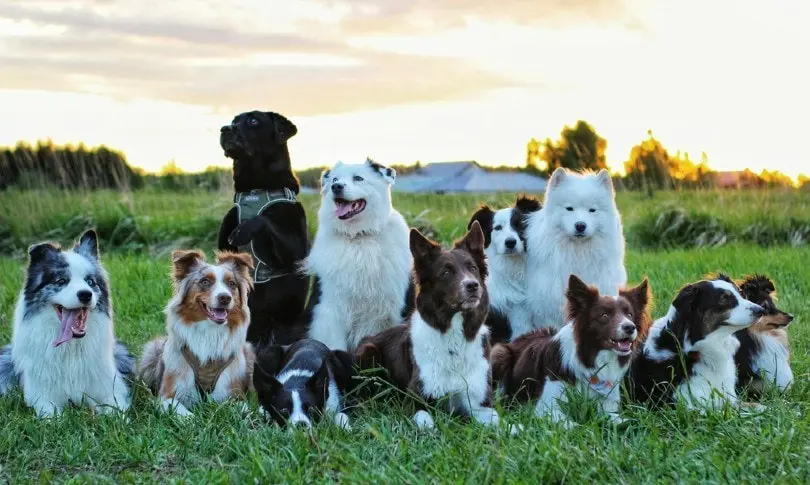Dogs have been our loyal companions for thousands of years, evolving from wild ancestors into a diverse range of breeds tailored to fulfill various roles in human society. From working dogs to beloved family pets, the number of dog breeds can be quite astonishing. But just how many dog breeds are there?
The Estimated Number of Dog Breeds
As of now, there are approximately 340 recognized dog breeds worldwide, according to the Fédération Cynologique Internationale (FCI), which is the international governing body of dog breeds. However, the American Kennel Club (AKC) recognizes 197 breeds. These numbers can vary significantly due to different breed standards and classifications used by various kennel clubs around the world.
Breed Classification
Dog breeds can be classified into several categories based on their traits, purposes, and physical characteristics. Here are the main classifications:
-
Sporting Group
These dogs were bred to assist hunters in retrieving game. They are known for their energy, enthusiasm, and friendly nature. Examples include the Labrador Retriever, Golden Retriever, and Cocker Spaniel. -
Hound Group
Hounds are known for their keen sense of smell and endurance. They were initially bred for hunting and tracking. Examples include Beagles, Bloodhounds, and Dachshunds. -
Working Group
Working dogs are bred to perform various tasks, such as guarding property, pulling sleds, and performing rescue work. Examples include the Siberian Husky, Doberman Pinscher, and Boxer. -
Terrier Group
Terriers were bred for hunting and killing vermin. They are often feisty and energetic. Examples include the Bull Terrier, Scottish Terrier, and Jack Russell Terrier. -
Toy Group
Toy breeds are small in size and bred primarily for companionship. They are often popular among urban dwellers. Examples include the Chihuahua, Pomeranian, and Shih Tzu. -
Non-Sporting Group
This diverse group includes breeds that don’t fit into the other categories. They come in various shapes, sizes, and temperaments. Examples include the Bulldog, Dalmatian, and Poodle. -
Herding Group
Herding dogs are known for their intelligence and ability to control livestock. They are highly trainable and energetic. Examples include the German Shepherd, Border Collie, and Australian Shepherd.
The Importance of Breed Recognition
Breed recognition is essential for various reasons:
-
Standardization: Recognized breeds have standardized traits, which help ensure consistency in their appearance, temperament, and health.
-
Health Screening: Breed organizations often promote health screenings and responsible breeding practices to reduce the prevalence of genetic disorders.
-
Rescue and Adoption: Knowing the breeds can help rescue organizations place dogs in suitable homes where their traits and needs can be met.
Mixed Breeds and Designer Dogs
While purebreds are recognized by kennel clubs, mixed breeds—dogs with a lineage of two or more breeds—are becoming increasingly popular. Additionally, the rise of “designer dogs,” which are intentional mixes of two specific breeds (such as the Labradoodle, a mix of Labrador Retriever and Poodle), has also contributed to the dog population's diversity.
A Look at Rare Breeds
Some dog breeds are considered rare, with only a few hundred individuals existing. These breeds can be fascinating and unique, often possessing characteristics and histories that make them stand out. Some rare breeds include:
- Otterhound: A large breed originally used for hunting otters.
- Xoloitzcuintli (Mexican Hairless Dog): Known for its hairless coat and ancient history, this breed is one of the oldest in the Americas.
- Lagotto Romagnolo: An Italian breed known for its truffle-hunting abilities and curly coat.
Final Thoughts
In conclusion, the world of dog breeds is vast and varied, with approximately 340 breeds recognized worldwide. Each breed possesses its unique traits, characteristics, and history, making them well-suited for different roles and lifestyles.
Whether you're considering adding a new furry friend to your family or simply enjoying the company of your current companion, understanding the diverse range of dog breeds can enrich your experience as a dog owner. Always remember to research specific breeds and their needs to ensure a happy and healthy life for your canine companion!


